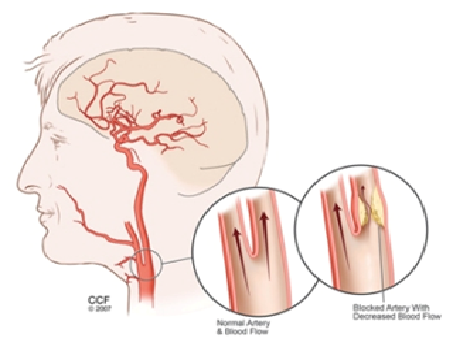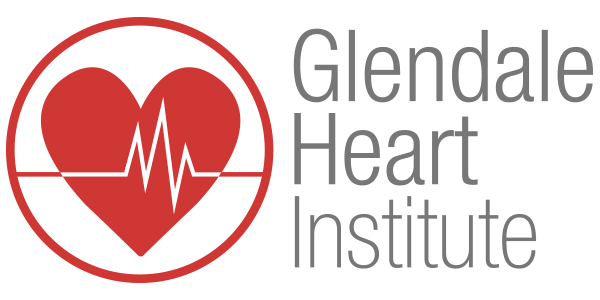Carotid angiography is an invasive imaging procedure that involves inserting a catheter into a blood vessel in the arm or leg, and guiding it to the carotid arteries with the aid of a special x-ray machine. Contrast dye is injected through the catheter so that x-ray movies of your carotid arteries (the arteries that supply your brain with oxygen-rich blood) are taken. This procedure is considered the “gold standard” for imaging the carotid and cerebral vessels.
Your doctor uses carotid angiography to:
• evaluate or confirm the presence of narrowing or blockage in your carotid arteries
• determine risk for future stroke
• determine the need for further treatment (angioplasty or surgery)
• perform a minimally invasive procedure, carotid stenting, to fix the narrowing in the carotid artery.
Your doctor uses carotid angiography to:
• evaluate or confirm the presence of narrowing or blockage in your carotid arteries
• determine risk for future stroke
• determine the need for further treatment (angioplasty or surgery)
• perform a minimally invasive procedure, carotid stenting, to fix the narrowing in the carotid artery.

To prepare:
• You can wear whatever you like to the hospital. You will wear a hospital gown during the procedure.
• Leave all valuables at home. If you normally wear dentures, glasses or a hearing assist device, plan to wear them during the procedure.
• Your doctor or nurse will give you specific instructions about what you can and cannot eat or drink before the procedure.
• Ask your doctor what medications should be taken on the day of your test. You may be told to stop certain medications, such as Coumadin (warfarin, a blood thinner).
• If you are diabetic, ask your physician how to adjust your medications the day of your test.
• Tell your doctor and/or nurses if you are allergic to anything, especially iodine, shellfish, x-ray dye, latex or rubber products (such as rubber gloves or balloons).
• You may or may not return home the day of your procedure. Bring items with you (such as robe, slippers, and toothbrush) that may make your stay more comfortable. When you are able to return home, arrange for a companion to bring you home.
What to expect during your carotid angiography:
• You will be given a hospital gown to wear.
• A nurse will start an intravenous (IV) line in your arm so that medications and fluids can be administered during the procedure.
• The angiography room is cool and dimly lit. You will lie on a special table. If you look above, you will see a large camera and several TV monitors.
• The nurse or doctor will clean your skin at the site where the catheter (narrow plastic tube) will be inserted (arm or groin). Sterile drapes are used to cover the site and help prevent infection. It is important that you keep your arms and hands down at your sides and not disturb the drapes.
• Electrodes (small, flat, sticky patches) will be placed on your chest. The electrodes are attached to an electrocardiograph monitor (ECG) that charts your heart’s electrical activity.
• You may be given a mild sedative to relax you, but you will be awake and conscious during the entire procedure.
• The doctor will use a local anesthetic to numb the site. A plastic introducer sheath (a short, hollow tube through which the catheter is placed) is inserted into a blood vessel in your arm or groin. A catheter will be inserted through the sheath and threaded to the arteries of your neck (right and left carotid artery).
• When the catheter is in place, the lights will be dimmed and a small amount of “contrast material” will be injected through the catheters into your arteries. The contrast material outlines the vessels that provide circulation to your brain.
• When the contrast material is injected into your blood vessel, you may feel hot or flushed for several seconds. This is normal and will go away in a few seconds. Please tell the doctor or nurses if you feel:
• an allergic reaction (itching, tightness in the throat)
• nausea
• chest discomfort
• problems with your vision
• difficulty moving one or more of your extremities
• any other symptoms
• The x-ray camera will be used to take photographs of the arteries of the head and neck. You may be asked to hold your breath or turn your head in different directions while the x-rays are taken. When all the photos have been taken, the catheter will be removed and the lights will be turned on.
After the Procedure
• The catheters and sheath are removed.
• You will need to be on bedrest for several hours.
• You will need to drink plenty of liquids to clear the contrast material from your body. You may feel the need to urinate more frequently.
• Your doctor will tell you if you are able to return home or will need to stay overnight. In either case, you will be monitored for several hours after the procedure. You will need a companion to drive you home
. • Treatment, including medications, diet and future procedures will be discussed with you prior to going home. Care of the wound site, activity and follow-up care will also be discussed.
Carotid angiography takes about one hour to perform, however it may take longer from preparation through recovery. Please ask your doctor if you have any questions about carotid angiography.
• You can wear whatever you like to the hospital. You will wear a hospital gown during the procedure.
• Leave all valuables at home. If you normally wear dentures, glasses or a hearing assist device, plan to wear them during the procedure.
• Your doctor or nurse will give you specific instructions about what you can and cannot eat or drink before the procedure.
• Ask your doctor what medications should be taken on the day of your test. You may be told to stop certain medications, such as Coumadin (warfarin, a blood thinner).
• If you are diabetic, ask your physician how to adjust your medications the day of your test.
• Tell your doctor and/or nurses if you are allergic to anything, especially iodine, shellfish, x-ray dye, latex or rubber products (such as rubber gloves or balloons).
• You may or may not return home the day of your procedure. Bring items with you (such as robe, slippers, and toothbrush) that may make your stay more comfortable. When you are able to return home, arrange for a companion to bring you home.
What to expect during your carotid angiography:
• You will be given a hospital gown to wear.
• A nurse will start an intravenous (IV) line in your arm so that medications and fluids can be administered during the procedure.
• The angiography room is cool and dimly lit. You will lie on a special table. If you look above, you will see a large camera and several TV monitors.
• The nurse or doctor will clean your skin at the site where the catheter (narrow plastic tube) will be inserted (arm or groin). Sterile drapes are used to cover the site and help prevent infection. It is important that you keep your arms and hands down at your sides and not disturb the drapes.
• Electrodes (small, flat, sticky patches) will be placed on your chest. The electrodes are attached to an electrocardiograph monitor (ECG) that charts your heart’s electrical activity.
• You may be given a mild sedative to relax you, but you will be awake and conscious during the entire procedure.
• The doctor will use a local anesthetic to numb the site. A plastic introducer sheath (a short, hollow tube through which the catheter is placed) is inserted into a blood vessel in your arm or groin. A catheter will be inserted through the sheath and threaded to the arteries of your neck (right and left carotid artery).
• When the catheter is in place, the lights will be dimmed and a small amount of “contrast material” will be injected through the catheters into your arteries. The contrast material outlines the vessels that provide circulation to your brain.
• When the contrast material is injected into your blood vessel, you may feel hot or flushed for several seconds. This is normal and will go away in a few seconds. Please tell the doctor or nurses if you feel:
• an allergic reaction (itching, tightness in the throat)
• nausea
• chest discomfort
• problems with your vision
• difficulty moving one or more of your extremities
• any other symptoms
• The x-ray camera will be used to take photographs of the arteries of the head and neck. You may be asked to hold your breath or turn your head in different directions while the x-rays are taken. When all the photos have been taken, the catheter will be removed and the lights will be turned on.
After the Procedure
• The catheters and sheath are removed.
• You will need to be on bedrest for several hours.
• You will need to drink plenty of liquids to clear the contrast material from your body. You may feel the need to urinate more frequently.
• Your doctor will tell you if you are able to return home or will need to stay overnight. In either case, you will be monitored for several hours after the procedure. You will need a companion to drive you home
. • Treatment, including medications, diet and future procedures will be discussed with you prior to going home. Care of the wound site, activity and follow-up care will also be discussed.
Carotid angiography takes about one hour to perform, however it may take longer from preparation through recovery. Please ask your doctor if you have any questions about carotid angiography.
Cardiac Specialty Care
• Structural Heart Disease
• TAVR
• CardioMEMS (Heart Failure)
• PFO Closure
• TAVR
• CardioMEMS (Heart Failure)
• PFO Closure
• Coronary Intervention
• Complex Higher-Risk (And Indicated) Patients (CHIP) Angioplasty
• Atherectomy
• Impella and ECMO Support
• Complex Higher-Risk (And Indicated) Patients (CHIP) Angioplasty
• Atherectomy
• Impella and ECMO Support
• Peripheral Angioplasty
• Varicose Vein Treatment (Venous Ablation)
• DVT thrombectomy - IVC filter
• Carotid Stenting
• Varicose Vein Treatment (Venous Ablation)
• DVT thrombectomy - IVC filter
• Carotid Stenting
• Rhythm Management
• Pacemaker
• Holter Monitoring
• Exercise Stress Test
• Echocardiography
• Nuclear Stress Test
• Enhanced External Counterpulsation (EECP)
• Pacemaker
• Holter Monitoring
• Exercise Stress Test
• Echocardiography
• Nuclear Stress Test
• Enhanced External Counterpulsation (EECP)
